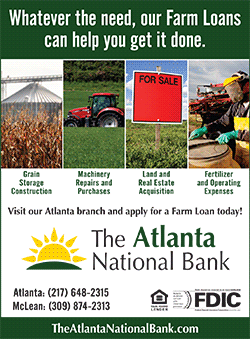Illinois cattle farmers get creative to tackle high feed costs
 Send a link to a friend
Send a link to a friend
 [November 03, 2022]
By Zeta Cross | The Center Square contributor [November 03, 2022]
By Zeta Cross | The Center Square contributor
(The Center Square) – The cost of hay and
cattle feed is up 35% over the past year, and Illinois cattle farmers
are coping by thinking outside the box when it comes to livestock feed.
Cattle producers have always been good at coming up with creative ways
to keep their feed costs down, Travis Meteer, a beef extension
specialist with the University of Illinois, told The Center Square. Cows
are happy to dine on waste products that would otherwise end up in the
landfill, he said.
“Farmers may know people at a local brewery where they can get mash and
waste products,” Meteer said. “They may haul corn to the ethanol plant.
On their return trip, they can take the distiller’s grain back to their
farm to feed to cows.”
When it comes to cutting feed costs, there is no silver bullet, Meteer
said. The lowest cost option for cattle feed is keeping the cows out in
the fields longer so they can find their own food. Adding cover crops
such as wheat in rotation is one way to do that.
“We’ve seen rising fuel costs that are really inhibitive to profits on a
farm," Meteer said. "So if we don’t have to start the tractor to feed
the bale of hay to a cow, and the cow can stay out and graze their own
feed, that is certainly something that can help our producers control
costs."

[to top of second column]
|

Cows will eat a lot of things that might surprise people, including
waste stream products from human food, Meteer said.
“Cookies, crackers, candies – all kinds of things – can be incorporated
into a beef cow diet,” he said.
Feeding cattle in Illinois, where there is plenty of corn and soybeans,
is an advantage, Meteer said. Farmers can feed their cows soybean hulls
and they can make the most of their corn stalks, which are a favorite
source of low-cost cattle forage that Meteer likes to promote.

“We have so many corn stalks here in Illinois," he said. "The cheapest
feed option is grazable forage. Farmers also can seed down oats and
turnips to extend the cows' grazing season.”
Other cover crop mixes for winter forage are rye, kale and wheat.
“There are different opportunities that can keep cows harvesting their
own forage for more days out of the year,” he said.
The high cost of feed and other input costs are straining the system
right now, Meteer said. Farmers are anxiously awaiting an increase in
cattle prices, and because of nationwide drought and other factors, the
U.S. cattle herd has fewer cows now than it did a couple of years ago,
he said.
“With less cows in the herd producing less calves, we would expect
sooner than later that we will see a rise in price for the calves and
for our beef cattle,” Meteer said. “That will help us cover some of
these costs.” |